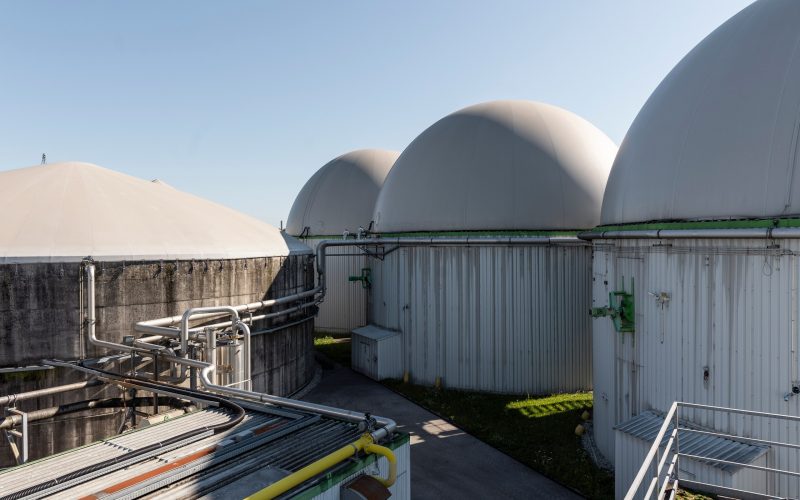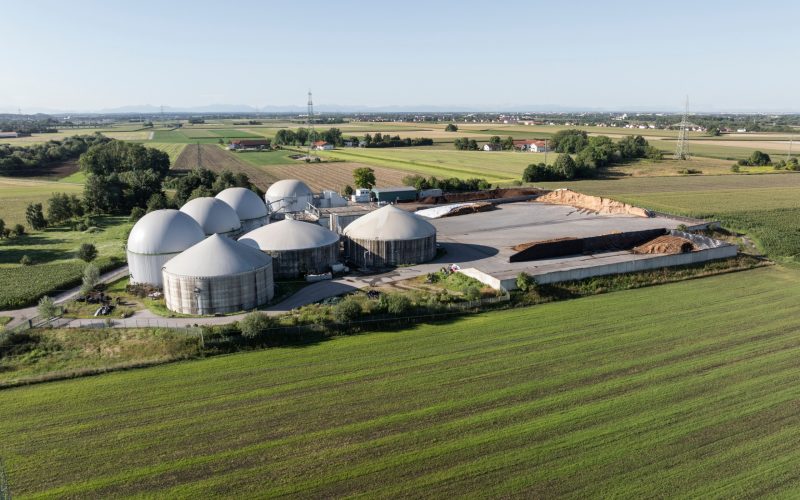New WebGIS tool for assessing the sustainability of bioenergy projects
The implementation of bioenergy projects on marginal and unproductive lands requires a comprehensive assessment. To this end, the Bioplat-Eu project has developed a modern tool and methodology for studying the impact on sustainability, as well as monitoring sustainability. The BIOPLAT-EU project aims to assist in effective decision-making on bioenergy projects by providing a webGIS tool for sustainability assessment.
The concept of sustainability assessment is structured as an analysis of the difference in impacts caused by two (or more) forecast scenarios: baseline and target (within the target region). For each sustainability indicator, there is a projection into the future of the conditions expected without the implementation of the bioenergy project (baseline scenario) and with the implementation of the bioenergy project (target scenario).
Geospatial data of the Bioplat-Eu webGIS tool contain a geographical map and a set of basic layers with information data, as well as GIS maps of lands identified as marginal or unproductive in Europe and Ukraine. It is based on the analysis of satellite images and other input geodata collected by project partners. Using the map, the user can search and browse specific areas on it to perform a sustainability assessment. More information is already on the SAF platform.
Steps that are needed to perform a sustainability assessment
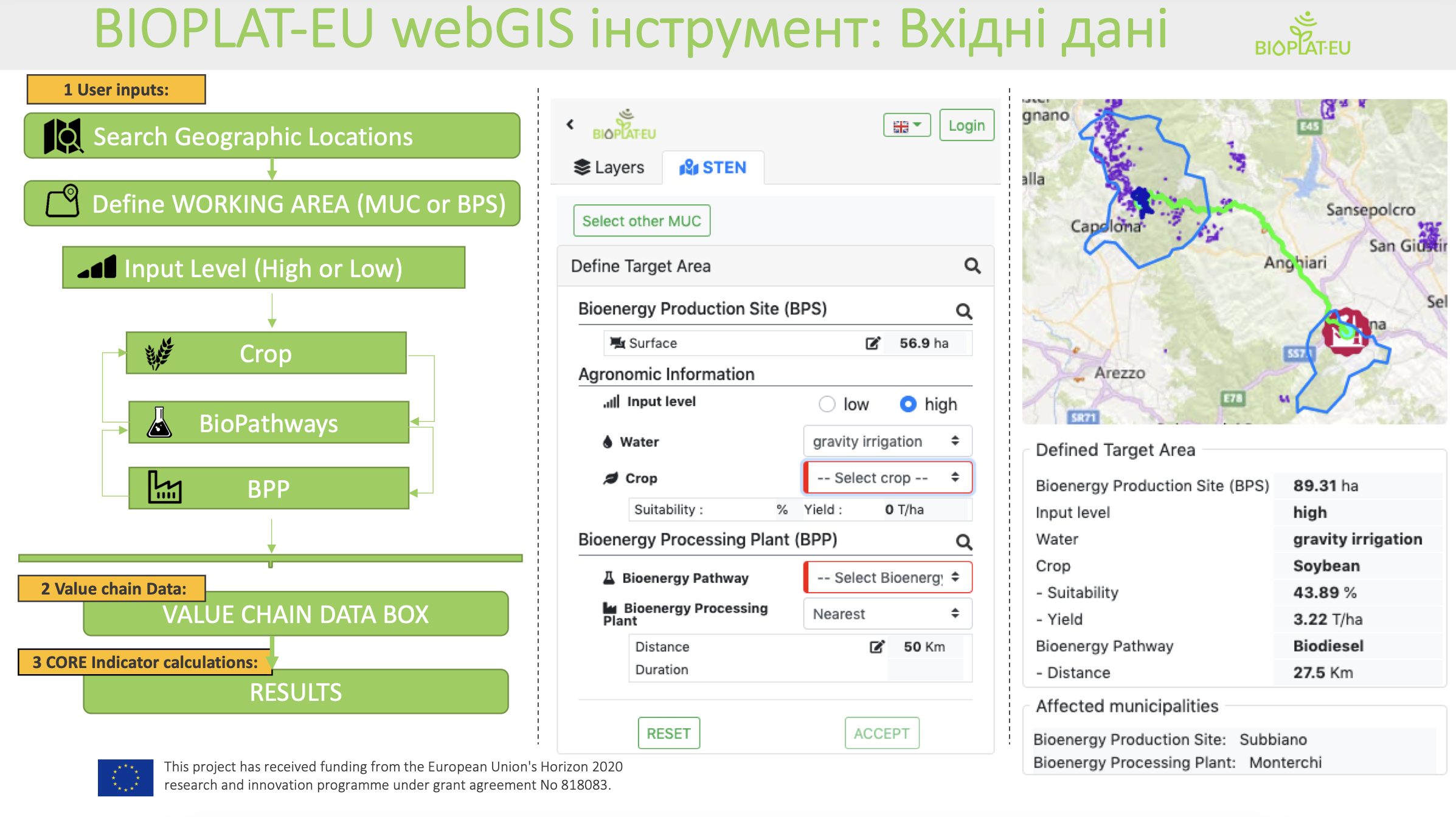
- Find the region on the map on the website: https://webgis.bioplat.eu/.
- Identify an area with unproductive land where biomass production can be placed (you can select several areas or identify a piece of land of another shape within one area).
- Choose a Low or High level of care within the Farm Management Practices, which take into account different standards of fertilizer applications, mechanization, and plant protection products.
- Choose the crop for cultivation (depending on the climatic zone, the following crops will be offered: Camelina, Eucalyptus, Arundo donax, Corn, Miscanthus, Poplar, Rapeseed, Sorghum, Glycine max (Soybean), Sugar beet, Sunflower, Panicum virgatum, Wheat, Straw, Willow).
- Choose the bioenergy direction (depending on the selected crop, the following will be offered: 1G Ethanol, CHP (solid biomass), CHP (biogas), Vegetable oil, Biodiesel, CHP (gasification), 2G Ethanol (cellulose), Biomethane, Hydrogenated vegetable oil).
- Select the Biomass Processing Station (depending on the selected bioenergy direction, the nearest station will be proposed, but you can determine the location by marking it on the map).
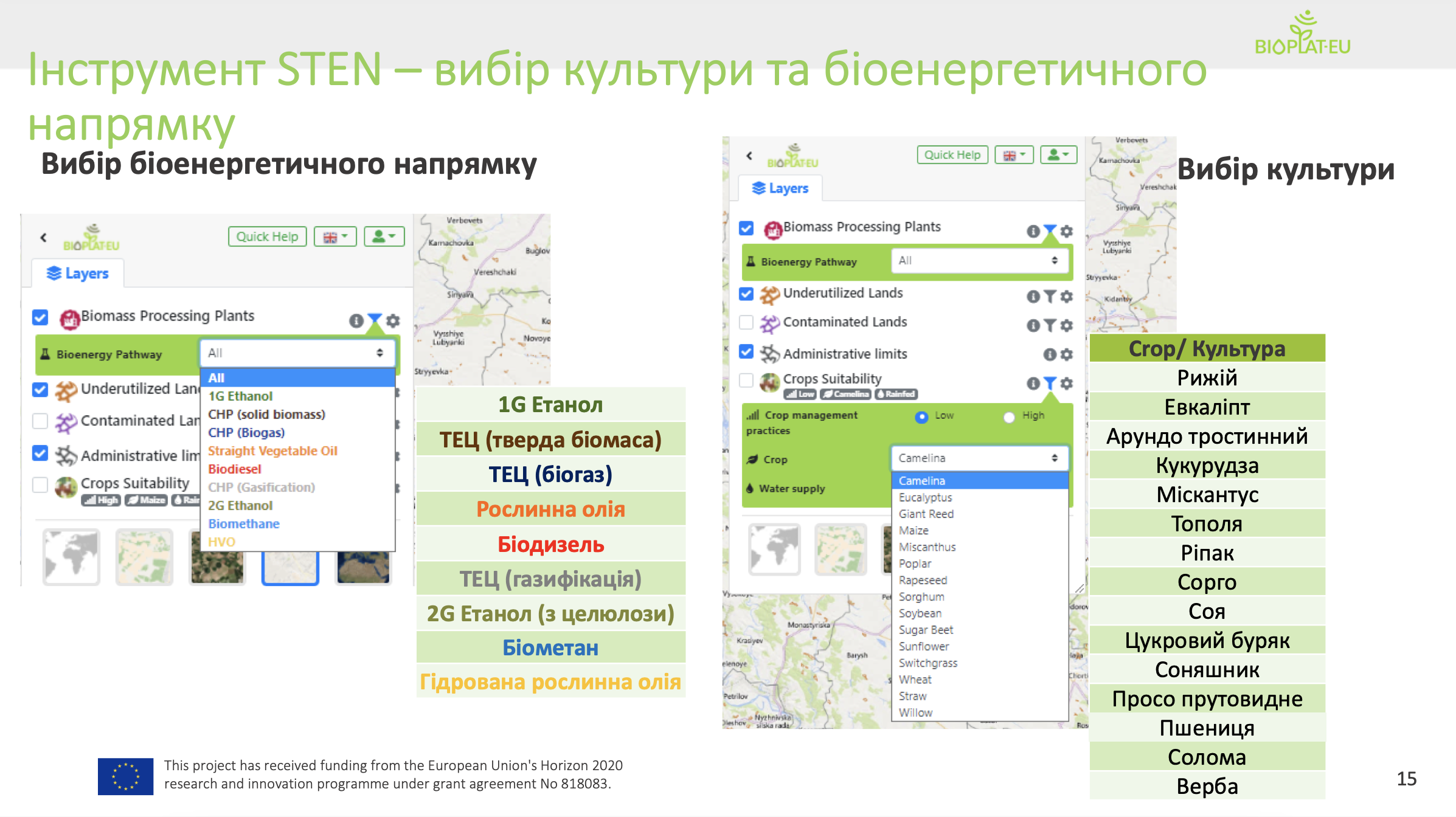
After that, the user will be redirected to the Value Chain Data Box, where he can specify the input data (in case of registration), which will be further used to model the assessment of sustainability.
Sustainability aspects that can be assessed by the user during the modeling of the bioenergy value chain are divided into:
- environmental (air quality, water use, land use and cover change),
- social (employment in the bioenergy sector, change in income, energy access);
- techno-economic (net energy balance, gross value added, infrastructure, capacity).
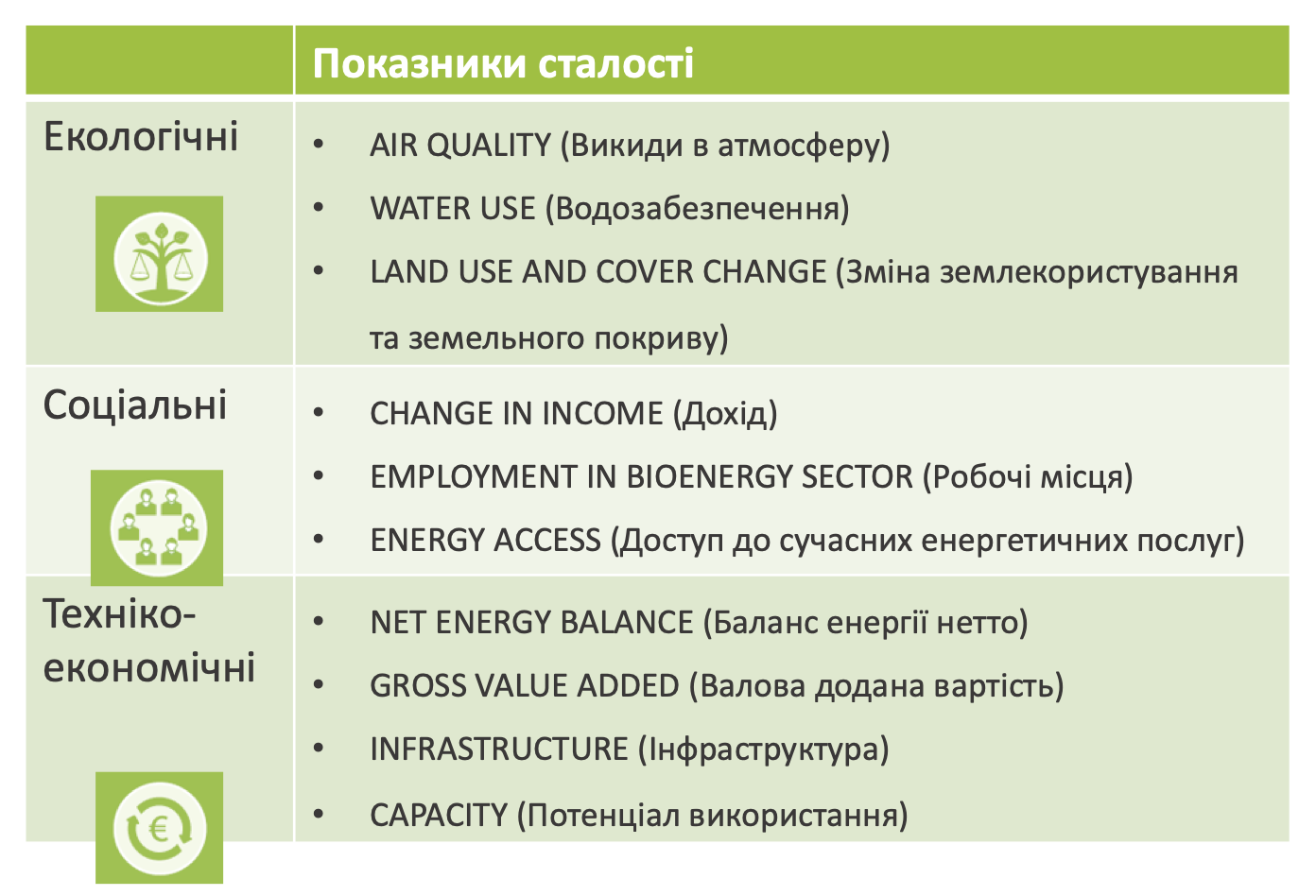
Bioplat-Eu provides further recommendations to users of the platform through the support service. You can contact the experts of BIOPLAT-EU and ask them any questions within the project. To do this, use the project website.
This project has received funding from the European Union’s H2020 research and innovation programme under grant agreement No 818083.
It will be recalled that UABIO is a partner of the Sustainable Agribusiness Forum (SAF) that was created on the initiative and support of the European Bank for Reconstruction and Development (EBRD).

